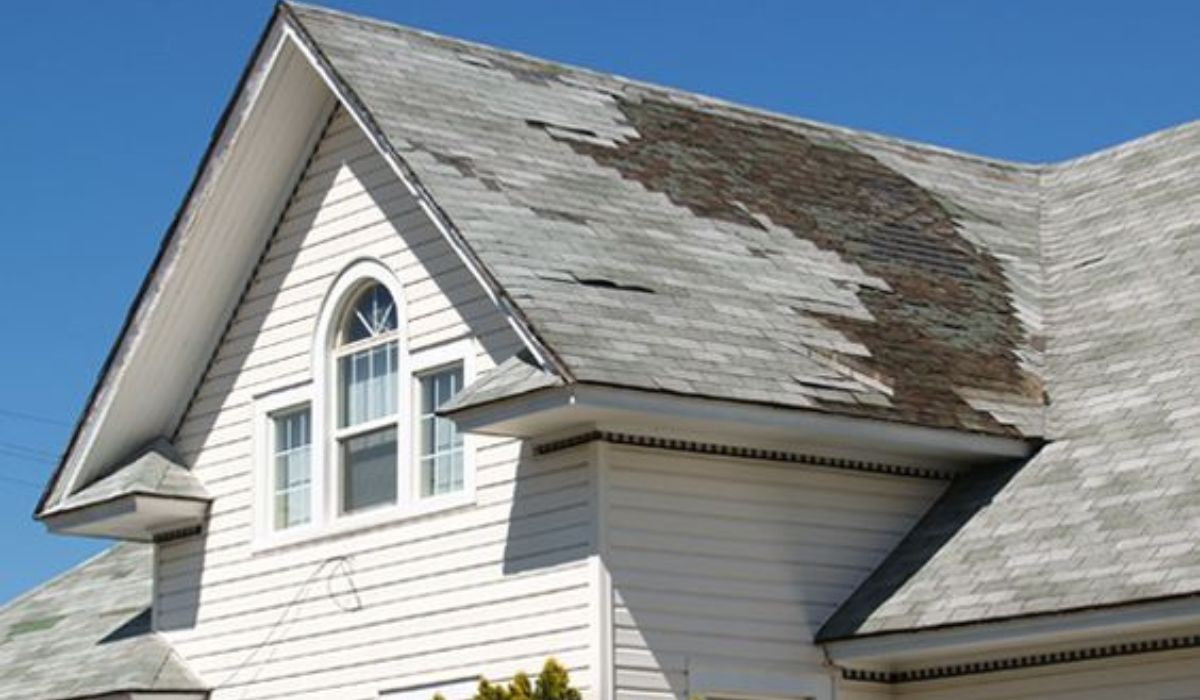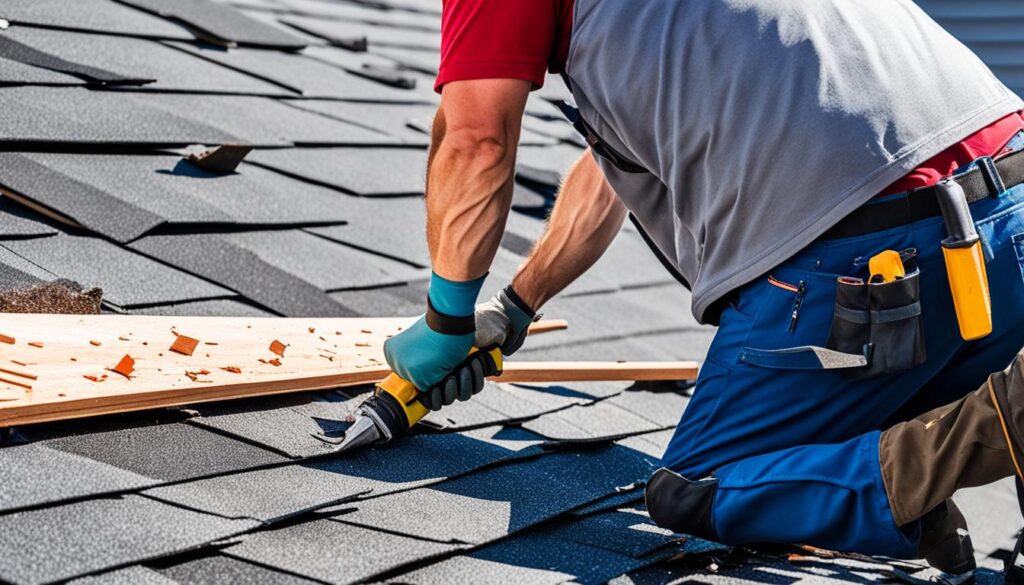
In the United States, many homeowners deal with roof damage. This issue costs them $1.6 billion yearly. But, how can you spot and fix roof damage early to avoid big problems? Is there a way to cut down on costly repairs or replacements?
This guide will explain why checking your roof for damage is crucial. We’ll look at the signs and kinds of damage you should watch for. Also, we’ll go over quick solutions and when roof repair or getting a new roof is the best choice. By the end, you’ll know how to keep your home safe from storm damage and a roof that leaks.
The Importance of Roof Damage Assessment
Prevent Costly Repairs and Replacements
It’s crucial to assess your roof for damage. Storms and hail cause 40% of damage claims. This can lead to severe issues like leaks if not promptly addressed.
Regualar assessments save money in the long run. They help avoid big repairs or even a new roof. Keeping your roof in good condition is key.
Seek Professional Assistance
In cases of roof damage, getting professional help is wise. Roofing experts offer accurate assessments and solutions. They ensure the job is done right.
Expert Guidance for Repair Solutions
Professional inspections provide repair solutions suited to your needs. They know how to identify and fix roof problems. Their expertise is valuable.
Longevity and Durability
Regular assessments and quick fixes enhance your roof’s life. This prevents further damage and leaks. It also saves you from major expenses and protects your home.
Being proactive about roof care is essential. Regular checks keep your home safe and avoid costs. So, check your roof today for a secure and happy home.
Signs and Types of Roof Damage
Knowing roof damage signs is key to prompt repairs. Homeowners can solve issues quickly. This stops further home damage.
Some common roof damage signs are:
- Leaks in the attic or ceiling: Spotting water seepage or stains means there could be a leak.
- Chipped or leaning chimneys: A chimney with chips or leaning may signal roof issues.
- Dented or loosened flashing: Flashing that’s dented may allow leaks, possibly damaging the roof more.
- Gutter and downspout damage: Water seeping might mean your gutters or downspouts are damaged.
- Missing shingle granules: Finding granules in gutters could mean roof wear and tear.
- Visible shingle damage: Cracks, curls, or missing shingles show clear damage that needs fixing.
Weather impacts roofs differently, causing various damage types:
Hail:
Hail can be harsh on roofs, removing shingle granules and weakening them. This can cause leaks and water damage.
Rainwater:
Rain can get into small roof openings, leading to more severe water damage. It can also weaken the roof structure.
Snow and ice:
Too much snow and ice can weigh down the roof, potentially causing structural harm. The freezing and thawing process can make matters worse.
High winds:
Wind can lift or tear off shingles, leaving the roof vulnerable to damage.
Knowing what harms roofs helps homeowners react fast. Roofing experts can guide and help fix roof damage.
Temporary Fixes and Roof Repair or Replacement
Roof damage needs quick attention to avoid more issues. Damage from storms, old age, or other causes should be fixed fast. This can stop the need for big, costly repairs later. Quick fixes are okay short-term, but they can’t replace permanent repairs or a new roof.
Quick fixes like tarps to cover the damage or using roofing cement for small leaks are good for now. They can stop further harm until a pro fixes everything. Remember, these aren’t forever solutions. They are just to hold things off for a bit.
“Temporary fixes like using roofing cement or a tarp can be helpful in preventing further damage. However, they should only be seen as a temporary solution and not as a long-term fix. It’s crucial to consult with professionals to determine the best course of action for a more permanent solution.”
If the damage is small, a minor repair might work. A roofer can look at the roof and suggest the best fix. But, if the damage is big or all over, you might need a new roof.
Talking with roofers is key to know your best move. They can check the damage and your roof’s overall state. They’ll suggest what you need to do next.

Conclusion
Taking care of your roof early is crucial for homeowners. It ensures your roof stays strong and lasts a long time. Make sure to check for damage often. And if you need help, don’t hesitate to call a pro.
Know the signs of roof damage to keep your house safe from leaks and other problems. Quick, temporary fixes can help in the short term. But, remember to follow up with permanent repairs.
Staying ahead of roof issues is smart. Don’t let them get worse before you act. Keeping your roof in good shape means fewer big repairs down the line.

Meet William Adams, a seasoned roofing expert with over 30 years of hands-on experience in the industry. Having worked tirelessly under the scorching sun and through the fiercest storms, William brings a wealth of knowledge and expertise to the table. Hailing from the heart of the USA, he’s witnessed the evolution of roofing practices firsthand, mastering every aspect along the way. Now retired from the field, William spends his days cherishing time with his loved ones while sharing his invaluable insights through this platform. With William at the helm, you can trust that every tip, advice, and recommendation provided is backed by years of real-world experience and unwavering dedication to quality craftsmanship. Join us as we journey through the world of roofing, guided by the wisdom and passion of a true industry veteran.
